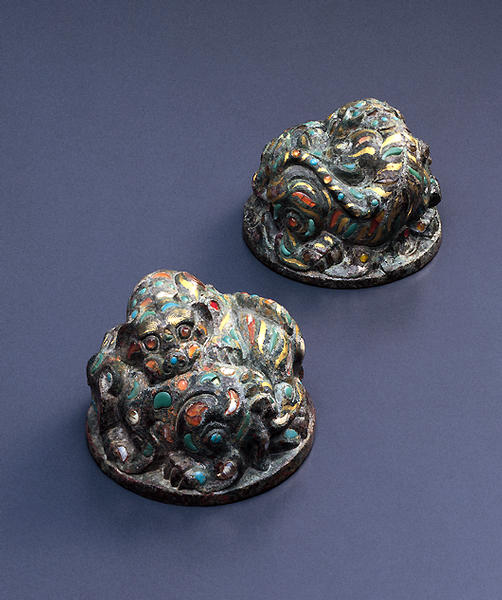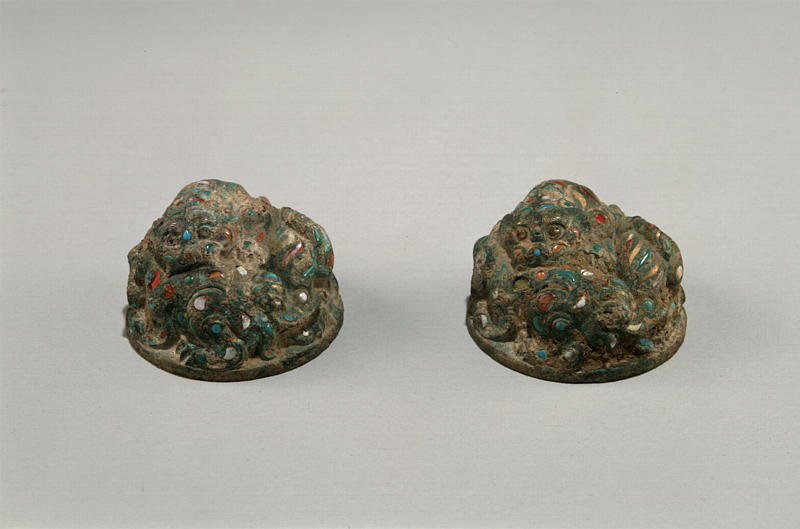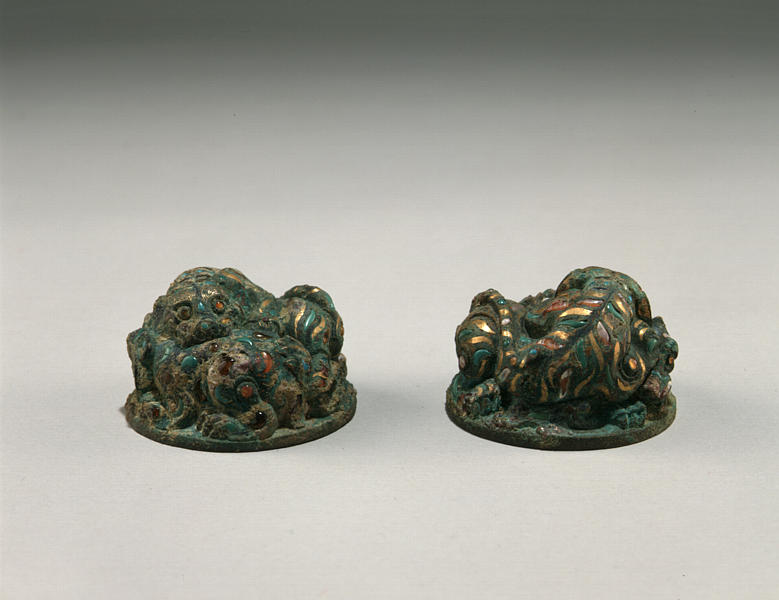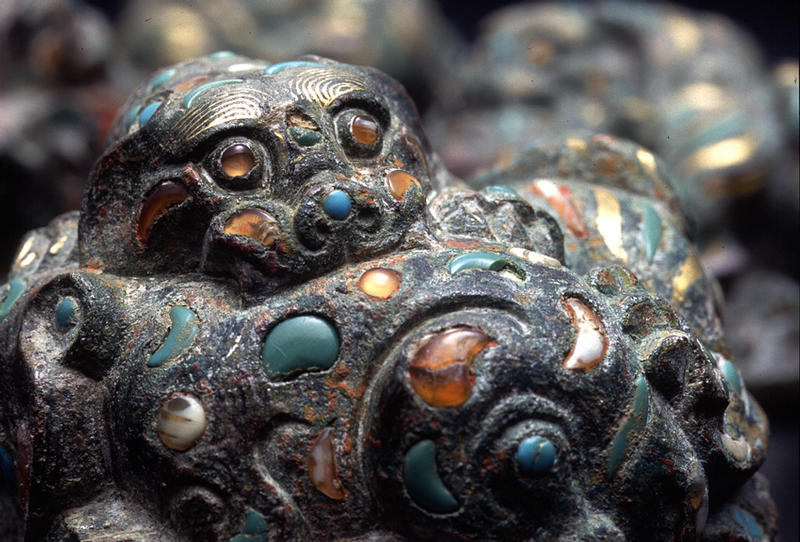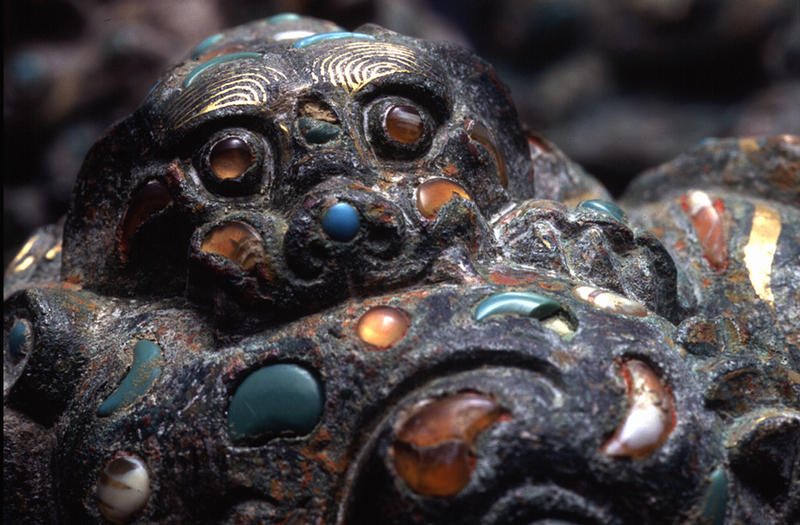虎鎮
- 中国
- 中国・前漢時代前期
- 前206-前100年頃
- 青銅、金、銀、玉、トルコ石、ガラス
- H-3.3 D-5
このような鎮は、敷物の四隅を押さえるために使われた。床の上に織製敷物を敷き、人々はその上に脚を組んで座したようである。この作品の獣の写実性は金属及び準貴石による豊かな象嵌によって減じられるのではなく、不思議と高められている。赤瑪瑙の象嵌にはその下に赤い素材が置かれその色を強めているが、金及びトルコ石と交互に虎の背骨の両側に配され、二本の縞模様の列による色彩のリズムを生みだしている。その尾には瑪瑙とトルコ石の斑点が金の縞模様の間に配されている。
Catalogue Entry
During the early Western Han dynasty, the imperial Shanglin zoological park and hunting reserve adjacent to the walled city grew in size and importance.1 Conceived as a microcosm of the empire, it allowed the emperor and his courtiers to observe and study the various species of plants and animals known at the time. The site also provided the setting for orchestrated hunts and animal fights for the entertainment of the court.2 The excitement and energy of such beastly confrontations may have inspired these beautifully vibrant, naturalistic sculptures. On each of the four almost identical pieces, a prone bear is bettered by a feisty tiger. The bear crouches stolidly, his four clawed legs grasping the periphery of the disk. Conversely, three of the tiger's paws are planted firmly in the bear's flesh, its jaws biting the bear along its spine near the shoulders.
The beastly realism of these pieces is not softened but strangely enhanced by the rich surface inlays of metal and semiprecious stones. Gold alternates with agate--in a red bedding material that enhances the stone's color--and turquoise to create a chromatic rhythm of striped double rows on either side of the tiger's spine. On its tail, agate and turquoise dots are separated by gold stripes; on its shoulders and haunches, the stones reappear in isolation. Similar points, arranged in a band, encircle each tiger's neck like a collar. The bear's markings, characterized by a sprinkling of inlays, are equally rich but less naturalistic.
These luxurious objects had the practical function of anchoring the corners of ancient Chinese woven mats upon which people sat, cross-legged on the floor. Apparently used at banquets, even those laid out in tombs, four sinuous gilt-bronze leopards similar in size to the Shumei weights were found at the corners of a decayed mat also bearing bronze containers for food and wine in one burial.3 In the tomb of Dou Wan, consort of Liu Sheng, Prince Jing of Zhongshan (died 113 B.C.), four silver- and gold-inlaid spotted leopards were found in a cluster of objects including food and wine vessels along with other prized possessions.4
JKW
1. See Wang 1982, pp. 8-9; and Pirazzoli-t'Serstevens 1982), pp. 92-96.
2. See, for example, Sima Qian 1965, 117:3034. Perhaps the most famous ancient Chinese incident involving a bear, immortalized in the British Museum handscroll (no. OA 1903.4-8.1) attributed to Gu Kaizhi (about 344-406), involved an attack on the Emperor Yuandi (reigned 48-33 B.C.) in the women's chambers after a day spent watching animal fights; see Suzuki 1982, vol. 2, pp. 214-15, E260.
3. See Wenwu 1973.4, pp. 21-35.
4. See Hebei sheng 1980, vol. 1, pp. 265, 268; vol. 2, color pl. 26, pl. 183
